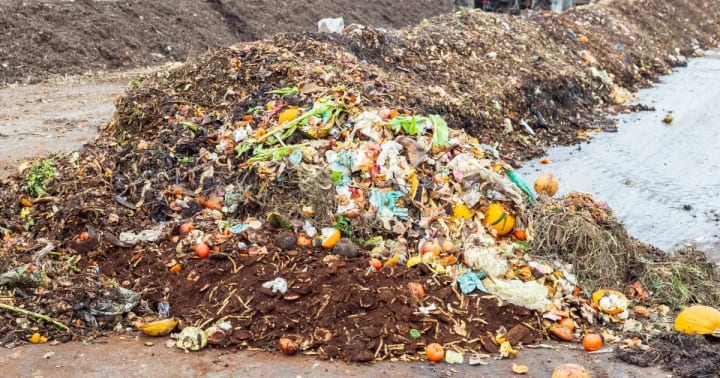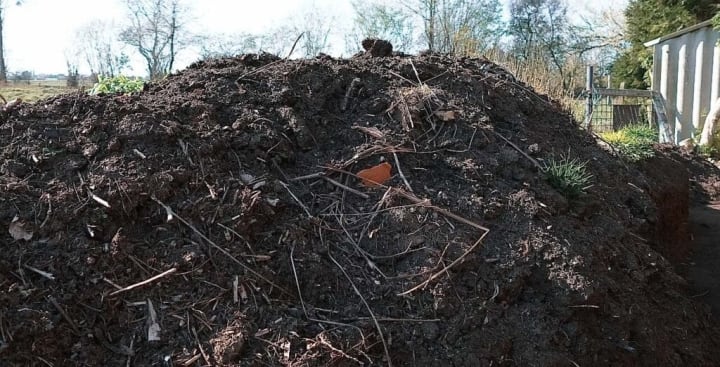Invisible Ecological Risks Caused by Biomass Composting
Unseen Threats in Organic Waste Management

Introduction
Biomass composting, a widely practiced method for organic waste management, is often hailed for its ecological benefits. It involves the decomposition of organic matter, transforming waste biomass into nutrient-rich compost. However, while the advantages of composting are well-documented, there are underlying ecological risks that are frequently overlooked. These risks, although invisible to the naked eye, have significant implications for environmental health. This article explores these hidden dangers and emphasizes the need for a more comprehensive understanding of biomass composting's environmental impact.
Release of Greenhouse Gases
Methane Emissions
One of the primary ecological risks associated with biomass composting is the emission of greenhouse gases, particularly methane (CH4). During the anaerobic decomposition of organic matter, methane is produced as a byproduct. Methane is a potent greenhouse gas, with a global warming potential approximately 25 times greater than that of carbon dioxide (CO2) over a 100-year period. Inadequate management of composting processes can lead to substantial methane emissions, exacerbating climate change.
Nitrous Oxide Emissions
Nitrous oxide (N2O) is another greenhouse gas released during the composting process. It is primarily produced through the microbial processes of nitrification and denitrification. Nitrous oxide has a global warming potential nearly 300 times that of carbon dioxide. The release of N2O from composting sites can significantly contribute to atmospheric greenhouse gas concentrations, posing a considerable ecological threat.

Leachate Contamination
Nutrient Runoff
Leachate, the liquid that percolates through composting material, can carry with it high concentrations of nutrients such as nitrogen and phosphorus. When leachate infiltrates soil and water systems, it can cause nutrient pollution. This pollution leads to eutrophication in aquatic ecosystems, characterized by excessive algal blooms that deplete oxygen levels, harm aquatic life, and degrade water quality.
Heavy Metal Contamination
Waste biomass used in composting may contain trace amounts of heavy metals, such as lead, cadmium, and mercury. These metals can leach into the environment through the composting process. The presence of heavy metals in soil and water poses serious health risks to both humans and wildlife, leading to bioaccumulation and biomagnification in food chains.
Pathogen Survival and Spread
Inadequate Composting Temperatures
Effective composting requires maintaining specific temperature ranges to ensure the destruction of pathogens. However, if the composting process is not adequately managed, temperatures may not reach levels sufficient to kill harmful microorganisms. Pathogens such as E. coli, Salmonella, and Listeria can survive in inadequately composted material, posing risks to human health and the environment.
Spread of Antibiotic-Resistant Bacteria
The use of waste biomass from livestock operations introduces the risk of spreading antibiotic-resistant bacteria. Antibiotics used in animal husbandry can persist in manure and other organic waste. During composting, these antibiotic-resistant bacteria can proliferate, potentially spreading to soil, water, and crops, complicating efforts to control bacterial infections and posing significant public health challenges.

Air Quality Degradation
Volatile Organic Compounds (VOCs)
Composting of waste biomass can release volatile organic compounds (VOCs) into the atmosphere. These compounds, including ammonia, hydrogen sulfide, and various organic acids, can cause odors and contribute to air pollution. VOCs can also participate in atmospheric reactions leading to the formation of ground-level ozone, a harmful air pollutant with adverse effects on human health and vegetation.
Particulate Matter
The composting process can generate particulate matter, which includes tiny particles suspended in the air. These particles can arise from the physical breakdown of biomass, microbial activity, and the volatilization of organic materials. Inhalation of particulate matter can lead to respiratory issues, cardiovascular diseases, and other health problems, particularly affecting vulnerable populations.
Soil Health Implications
Imbalance of Soil Nutrients
While composting adds essential nutrients to the soil, it can also create imbalances if not properly managed. Excessive application of compost can lead to the accumulation of nutrients like nitrogen and phosphorus, which may disrupt soil microbial communities and plant growth. An imbalance in soil nutrients can negatively impact soil health and agricultural productivity.
Alteration of Soil pH
The decomposition of waste biomass during composting can alter soil pH levels. Depending on the materials composted, the resulting compost may be either acidic or alkaline. Significant shifts in soil pH can affect the availability of nutrients, the activity of soil microorganisms, and the overall soil ecosystem. Maintaining appropriate pH levels is crucial for sustaining soil health and fertility.
Pyrolysis as an Alternative
Benefits of Pyrolysis
Pyrolysis, a thermal decomposition process conducted in the absence of oxygen, presents an alternative to traditional composting. Modern biomass pyrolysis process converts waste biomass into biochar, bio-oil, and syngas, offering several environmental benefits. Biochar, for instance, enhances soil health by improving soil structure, increasing water retention, and sequestering carbon. Bio-oil and syngas can be used as renewable energy sources, reducing dependence on fossil fuels.
Reduced Emissions
Pyrolysis significantly reduces the emission of greenhouse gases compared to composting. The controlled environment of pyrolysis minimizes the release of methane and nitrous oxide. Additionally, the stable carbon in biochar can remain in the soil for centuries, acting as a long-term carbon sink and mitigating climate change.
Contaminant Immobilization
Biochar produced through pyrolysis can immobilize heavy metals and other contaminants in the soil, reducing their bioavailability and environmental impact. This property makes biochar an effective tool for soil remediation and pollution control.
Conclusion
While biomass composting offers numerous ecological benefits, it is crucial to acknowledge and address the invisible risks associated with the process. Greenhouse gas emissions, leachate contamination, pathogen survival, air quality degradation, and soil health implications represent significant challenges that require careful management and mitigation. Exploring alternative technologies such as pyrolysis can provide more sustainable solutions for organic waste management. By adopting a holistic approach to waste biomass utilization, we can minimize ecological risks and enhance environmental sustainability.
About the Creator
Enjoyed the story? Support the Creator.
Subscribe for free to receive all their stories in your feed. You could also pledge your support or give them a one-off tip, letting them know you appreciate their work.






Comments
Wayne Shen is not accepting comments at the moment
Want to show your support? Send them a one-off tip.